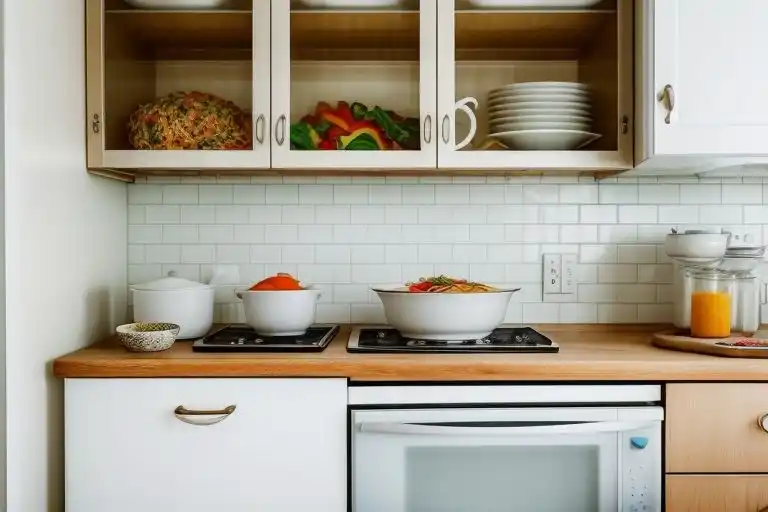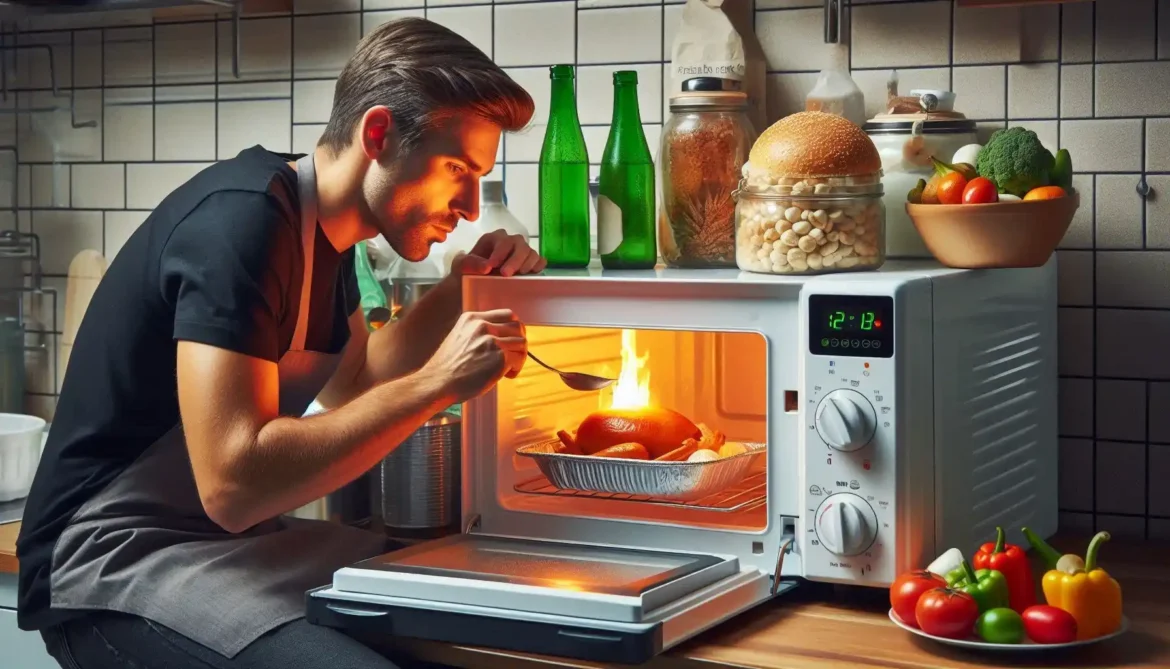Reheating food is a practical way to reduce waste and enjoy meals more than once. However, food safety must always come first, and proper reheating methods are essential to prevent food poisoning. By following the guidelines for each reheating method, along with keeping in mind the healthy and safe approaches, you can enjoy delicious leftovers safely and minimize food waste. Whether you’re microwaving a quick lunch or gently reheating a custard by double boiling, understand how to reheat various foods for the best results.

Reheating Food: A Guide to Safety, Health, and Deliciousness – FAQs
Safety
Q: Is it safe to reheat food?
A: Yes, it is generally safe to reheat food if you do it properly. The key is to ensure the food reaches a safe internal temperature to kill any harmful bacteria that may have grown since it was cooked.
Q: What is the danger of reheating food improperly?
A: Reheating food improperly can lead to food poisoning. Bacteria like Bacillus cereus, Clostridium perfringens, and Staphylococcus aureus can grow in cooked food left at room temperature. Reheating to the correct temperature kills these bacteria.
Q: How many times can I reheat food?
A: While technically you can reheat food more than once, it’s generally recommended to only reheat it once. Repeated reheating can negatively affect the texture, flavor, and nutrient content of the food. It also increases the risk of bacterial growth if not done correctly each time.
Q: What’s the best way to cool food down before refrigerating for reheating?
A: Cool food quickly to prevent bacterial growth. The USDA recommends cooling hot food within two hours to below 40°F (4.4°C). Divide large quantities into smaller, shallower containers for faster cooling. Avoid leaving food out at room temperature for longer than two hours.
Q: What temperature should I reheat food to?
A: You should reheat food to an internal temperature of at least 165°F (74°C). Use a food thermometer to ensure accuracy, especially for meats and poultry.
Q: Is it okay to reheat food in a microwave?
A: Yes, microwaves are a convenient way to reheat food, but they can sometimes heat unevenly. Check the temperature in several places using a food thermometer to ensure it’s heated through. Stirring food during microwaving can help ensure even heat distribution.
Q: How long should I allow food to cool before refrigerating it?
A: You should cool food as quickly as possible. Avoid leaving it out at room temperature for longer than 2 hours, or 1 hour if the temperature is above 90°F (32°C). Place food in shallow containers or bags to cool quicker.
Q: Are there any foods that should NOT be reheated?
A: While most foods can be reheated safely, some are more prone to changes in texture and flavor. Foods like fried foods, which tend to become soggy, are better enjoyed fresh. Be mindful of foods containing high amounts of nitrates like spinach, which can convert to harmful nitrites when reheated at high temperatures.
Health
Q: Does reheating food affect its nutritional value?
A: Yes, reheating can slightly affect the nutritional value of food, especially water-soluble vitamins like Vitamin C and B vitamins. However, the loss is usually minimal, and the benefits of eating a cooked meal outweigh the small nutritional losses.
Q: Can reheating food make it less healthy?
A: No, reheating food itself doesn’t typically make it less healthy if done correctly. However, repeated reheating can degrade the texture or flavor, and may cause the loss of some vitamins. Make sure to reheat until safe temperatures are reached.
Deliciousness
Q: How can I reheat food and keep it tasting good?
A: The reheating method can significantly impact taste and texture.
- Oven: Great for larger quantities and maintaining crispiness.
- Stovetop: Ideal for sauces, stews, and smaller portions. Add a splash of water or broth to prevent drying out.
- Microwave: Fastest but may require stirring and covering to distribute heat evenly.
- Air Fryer: Good for restoring crispiness, such as reheated fries or chicken.
Q: Why does food taste different after reheating?
A: The flavors in food can change during cooking, cooling, and reheating. Sugars can caramelize further, sauces may reduce or thicken, and some volatile aromas might be lost. Using the appropriate reheating method can help maintain the original flavor as much as possible.
Q: How can I prevent food from drying out when I reheat it?
A: Add a little liquid like water, broth, or sauce while reheating. Cover the dish while reheating to trap moisture. A slower, lower temperature reheat in the oven is good to reduce dehydration.
Q: What is the best way to reheat foods like pizza or pasta?
A: Pizza is best reheated in an oven or air fryer to maintain the crust crispness. A microwave can lead to a soggy crust. Pasta is best reheated on the stovetop with a splash of water or sauce to prevent it from drying out.
Q: Can I reheat frozen leftovers?
A: Yes, you can reheat frozen leftovers. Ensure they are completely thawed before reheating to reach an internal temperature of 165°F (74°C). Using the oven or stovetop is often better than a microwave for frozen foods to ensure even heating.

Important Note: This information is general and for guidance. Always refer to specific instructions for particular foods or appliances. If you are unsure about the safety of reheated food, it’s best to discard it. Always prioritize food safety to protect yourself and your family.



